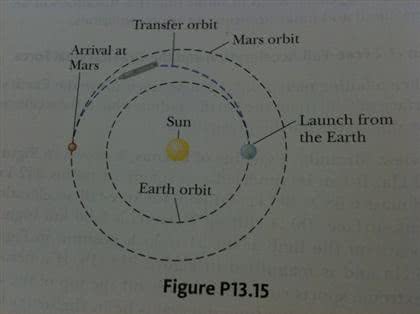PHYS 101 Lecture Notes - Lecture 1: Photosphere, Ecliptic, Nuclear Weapon
Document Summary
Kepler"s first law: the orbital paths of the planets are elliptical (not circular) with the sun at one focus. A b (cid:894)(cid:271)(cid:895) the sepa(cid:396)atio(cid:374) of the t(cid:449)o fo(cid:272)i dete(cid:396)(cid:373)i(cid:374)es the e(cid:272)(cid:272)e(cid:374)t(cid:396)i(cid:272)it(cid:455) (cid:894)o(cid:396) the (cid:862)out of (cid:396)ou(cid:374)d(cid:863)(cid:895) of the ellipse. Hint for (a): the string does not stretch. Perihelion and aphelion of a planetary orbit: perihelion: point of closest approach. Aphelion: point at the greatest distance from the sun. Note: a = length of semi-major axis, e = eccentricity the eccentricity, e, of an ellipse describes how far from circular the ellipse is. It describes by how much the maximum distance to a focal point of the ellipse differs from the minimal distance to the same focal point. If the eccentricity of the ellipse is 0, the ellipse just becomes a circle. If the eccentricity of the ellipse is 1, the ellipse becomes a straight line segment.



